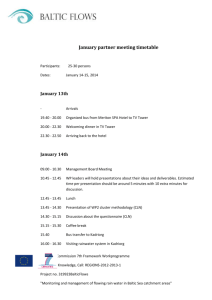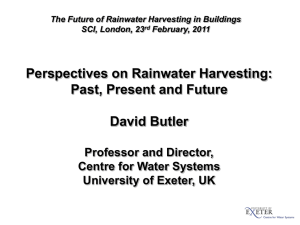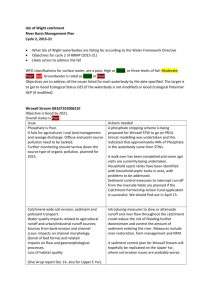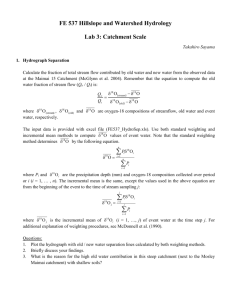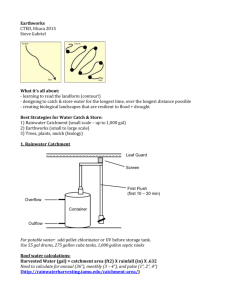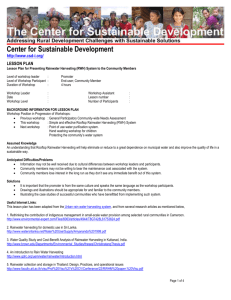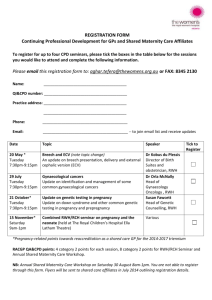macro catchment rainwater harvesting: opportunities and
advertisement
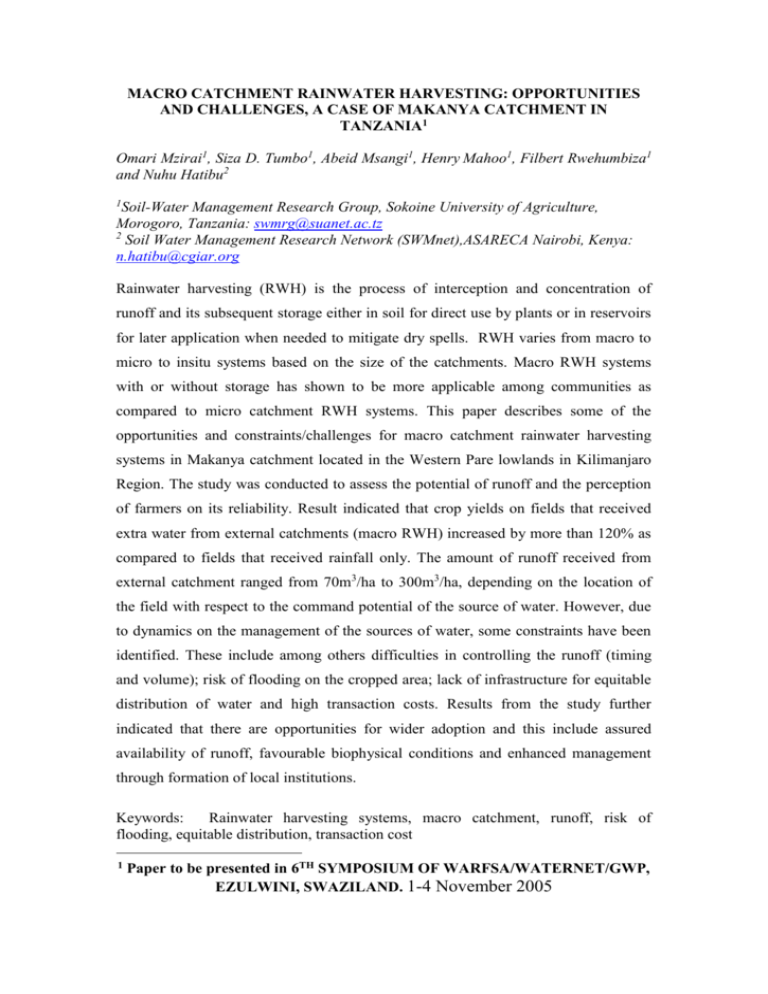
MACRO CATCHMENT RAINWATER HARVESTING: OPPORTUNITIES AND CHALLENGES, A CASE OF MAKANYA CATCHMENT IN TANZANIA1 Omari Mzirai1, Siza D. Tumbo1, Abeid Msangi1, Henry Mahoo1, Filbert Rwehumbiza1 and Nuhu Hatibu2 1 Soil-Water Management Research Group, Sokoine University of Agriculture, Morogoro, Tanzania: swmrg@suanet.ac.tz 2 Soil Water Management Research Network (SWMnet),ASARECA Nairobi, Kenya: n.hatibu@cgiar.org Rainwater harvesting (RWH) is the process of interception and concentration of runoff and its subsequent storage either in soil for direct use by plants or in reservoirs for later application when needed to mitigate dry spells. RWH varies from macro to micro to insitu systems based on the size of the catchments. Macro RWH systems with or without storage has shown to be more applicable among communities as compared to micro catchment RWH systems. This paper describes some of the opportunities and constraints/challenges for macro catchment rainwater harvesting systems in Makanya catchment located in the Western Pare lowlands in Kilimanjaro Region. The study was conducted to assess the potential of runoff and the perception of farmers on its reliability. Result indicated that crop yields on fields that received extra water from external catchments (macro RWH) increased by more than 120% as compared to fields that received rainfall only. The amount of runoff received from external catchment ranged from 70m3/ha to 300m3/ha, depending on the location of the field with respect to the command potential of the source of water. However, due to dynamics on the management of the sources of water, some constraints have been identified. These include among others difficulties in controlling the runoff (timing and volume); risk of flooding on the cropped area; lack of infrastructure for equitable distribution of water and high transaction costs. Results from the study further indicated that there are opportunities for wider adoption and this include assured availability of runoff, favourable biophysical conditions and enhanced management through formation of local institutions. Keywords: Rainwater harvesting systems, macro catchment, runoff, risk of flooding, equitable distribution, transaction cost 1 Paper to be presented in 6TH SYMPOSIUM OF WARFSA/WATERNET/GWP, EZULWINI, SWAZILAND. 1-4 November 2005


